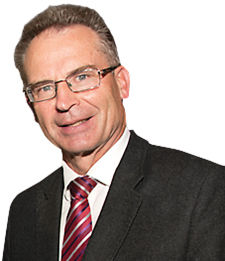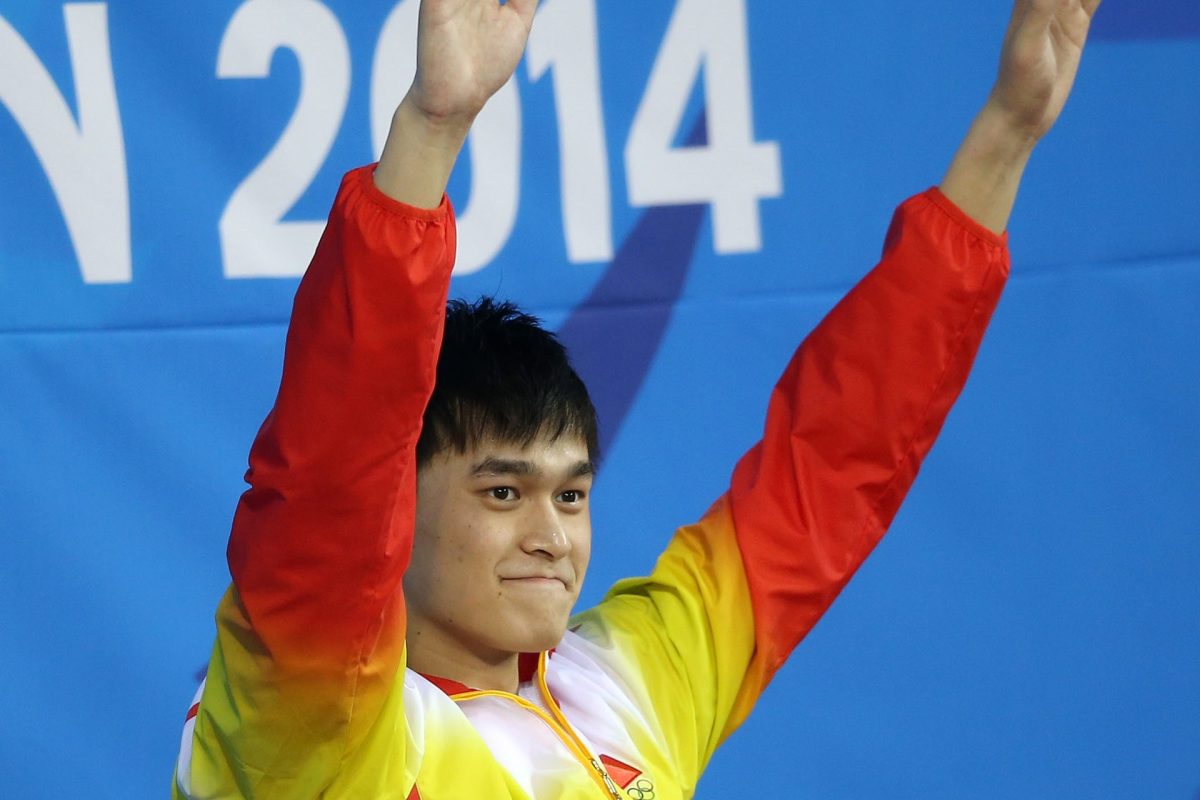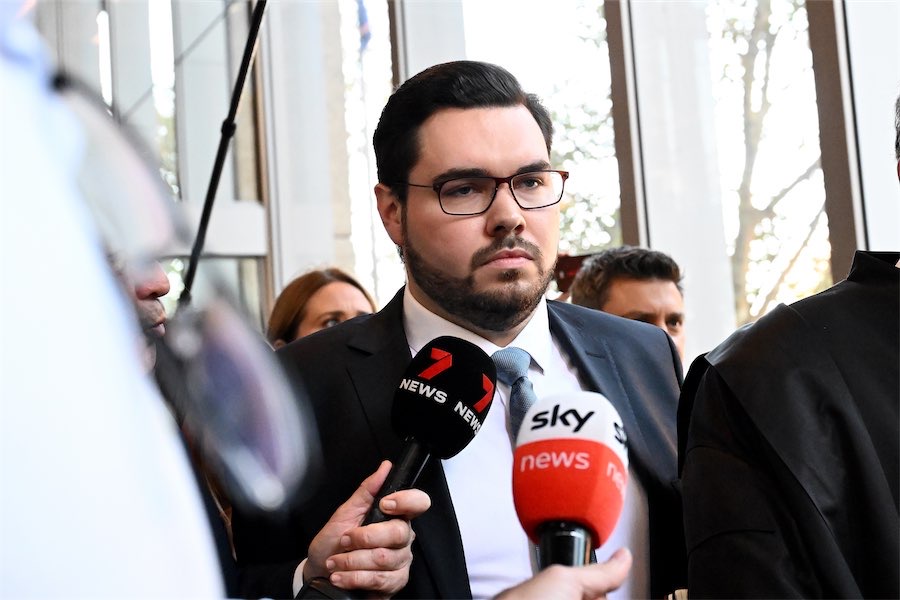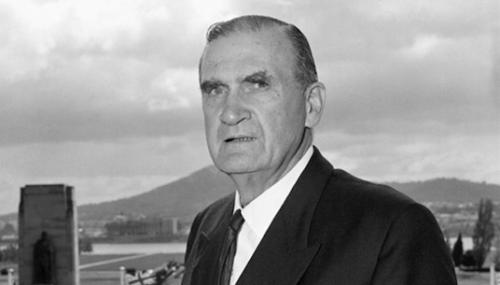
JON STANHOPE recently wrote about the extraordinary life of his brother Rick’s father-in-law, Derek Holyoake. This has now led him to a memorial window in St John’s church and the story of a terrible wartime massacre with a Canberra connection.
ON the outbreak of World War II, Derek Holyoake, aged 16, enlisted in the Australian Navy and saw active service throughout that war and the Korean War.

I noted in passing that Derek’s brother John (his first name was Ralph), who joined the Australian Army at the outbreak of World War II, aged 18, was killed in New Guinea in 1942.
I asked Derek about the circumstances of John’s death, and he told me he wasn’t clear about the details. However, he did have two telegrams from the Minister for the Army. The earlier of the telegrams, dated October 15, 1942, is in the following form:
“MR RG HOLYOAKE. RJ HOLYOAKE MISSING I REGRET TO INFORM YOU THAT V250003 HOLYOAKE RJ HAS BEEN REPORTED MISSING THE MINISTER FOR THE ARMY AND THE MILITARY BOARD EXTEND SINCERE SYMPATHY. MINISTER FOR THE ARMY.”
It was not until 14 months later – December 21, 1943 – that advice was received that John had been killed in action. The telegram read:
“MR RG HOLYOAKE. IT IS WITH DEEP REGRET THAT I HAVE TO INFORM YOU THAT V250003 HOLYOAKE RJ PREVIOUSLY REPORTED MISSING IS NOW REPORTED KILLED IN ACTION ON OR AFTER THE 8TH AUGUST 1942 AND DESIRE TO CONVEY TO YOU THE PROFOUND SYMPATHY OF THE MINISTER FOR THE ARMY. MINISTER FOR THE ARMY “
In possession of a time and place of death, I uncovered several documents pertinent to John’s death. The most explicit was “The Argus” newspaper of May 17, 1943, which contains a detailed report by journalist Axel Olsen, who wrote under the title of “Argus” War Correspondent. The report refers to John’s death, in combat with Japanese soldiers, on the Kokoda Track.
This is some of what Axel reported: “Somewhere in New Guinea: Through the treachery of a few renegade New Guinea natives who had been won over by the Japanese, four white women and 14 men lost their lives last year when the Japanese captured Buna and Gona. Two of the women were bayoneted to death by the Japanese; the other two were beheaded.
“The story of the sufferings of the victims is one of the most macabre in the history of New Guinea. When the Japanese advanced on Gona there were at the Anglican mission station a woman teacher, a nurse and a missionary. They were Miss Mavis Parkinson, 21, of Ipswich, teacher; Miss May Hayman, nurse; and Rev Father James Benson. As the Japanese approached the mission Father Benson and the two women decided to go inland and fled into the jungle.
“In reply to a message from a Lt Smith, who with a Sgt Hewitt and three spotters, Privates Hanna, Holyoake and Palmer was at Deunia, the mission party joined forces with the soldiers. Five US airmen whose bomber had been forced down and who had bailed out over the jungle were with the soldiers.
“The party set out to travel southwards but met unfriendly natives… who told the Japanese their whereabouts. When the fugitives arrived at the upper Debodura… the Japanese ambushed them. The two women, the lieutenant and the five airmen escaped into the jungle, but the rest of the party (Sgt Hewitt and Privates Hanna, Holyoake and Palmer) were killed.”
John Holyoake was just 20 years old when he died. I was deeply touched when reading “The Argus” report of the last days of his life. John was killed in the earliest days of the Kokoda campaign. He died while attempting, along with four other Australian soldiers, three of whom died with him, to escort in the face of an invading army of some thousands of Japanese soldiers, three Australian missionaries and five downed American airmen to safety. Unfortunately, a sad fate awaited the surviving members of the party including the two women Mavis Parkinson and May Hayman.
In the words of Axel Olsen: “The two women were eventually captured by natives who handed them to the Japanese. They were imprisoned for a few days during which they were subjected to many indignities and given little food.
“They were eventually led out of their prison and taken to a nearby coffee plantation where there were already two graves dug. When they arrived, a Japanese attempted to rape one of the women. She resisted and the Japanese drawing his bayonet stabbed her in the side. He stabbed her again and again before she fell dead.
“Another Japanese attacked the other woman and stabbed her in the throat. She died almost immediately. The bodies were thrown into the waiting graves and covered with earth.”
None of the American airmen nor Lt Smith survived more than another week or two before they, too, were captured and executed.
Affected as I was by this terribly sad story, I enlisted my next-door neighbour and nurse, Colleen Kinnane, to assist me in tracking down more information about nurse May Hayman and her schoolteacher colleague Mavis Parkinson.

To my great surprise it transpires that not only was May Hayman from Canberra and had, before taking on a role as a missionary nurse in New Guinea, worked at the Canberra Hospital throughout the ’30s but that while living in Canberra she resided in Forrest with her aunt, Mrs Vi Waterman, whose descendants still live in Canberra.
While May has been memorialised at her Canberra church, St John’s, in a beautiful stained-glass window and is regularly honoured by the St John’s congregation, I think that Australia and in this instance Canberra, could do far more than we do to honour the memory of May and Mavis.
Ralph John Holyoake’s name will be projected on to the exterior of the War Memorial’s Hall of Memory on Monday, January 31 at 1.52am

Who can be trusted?
In a world of spin and confusion, there’s never been a more important time to support independent journalism in Canberra.
If you trust our work online and want to enforce the power of independent voices, I invite you to make a small contribution.
Every dollar of support is invested back into our journalism to help keep citynews.com.au strong and free.
Thank you,
Ian Meikle, editor




Leave a Reply